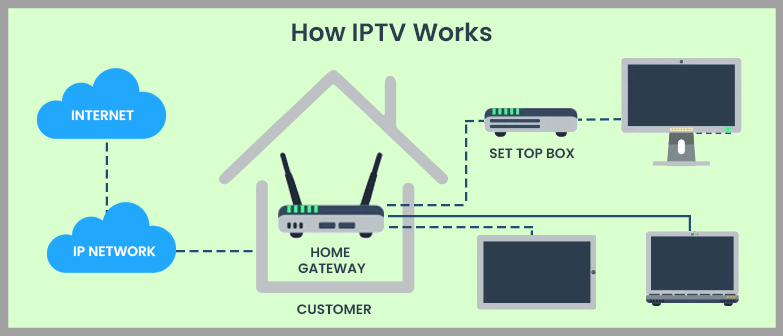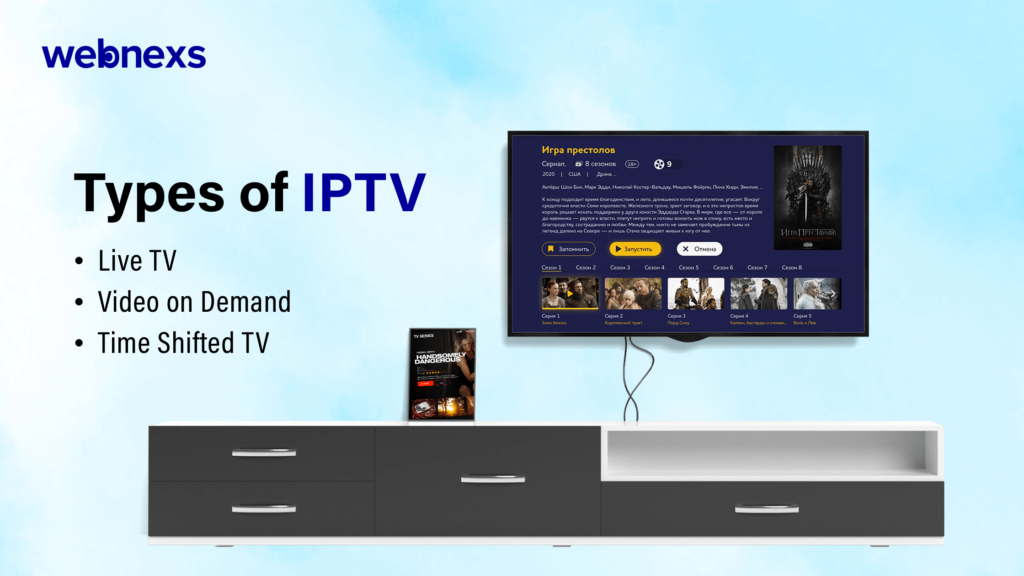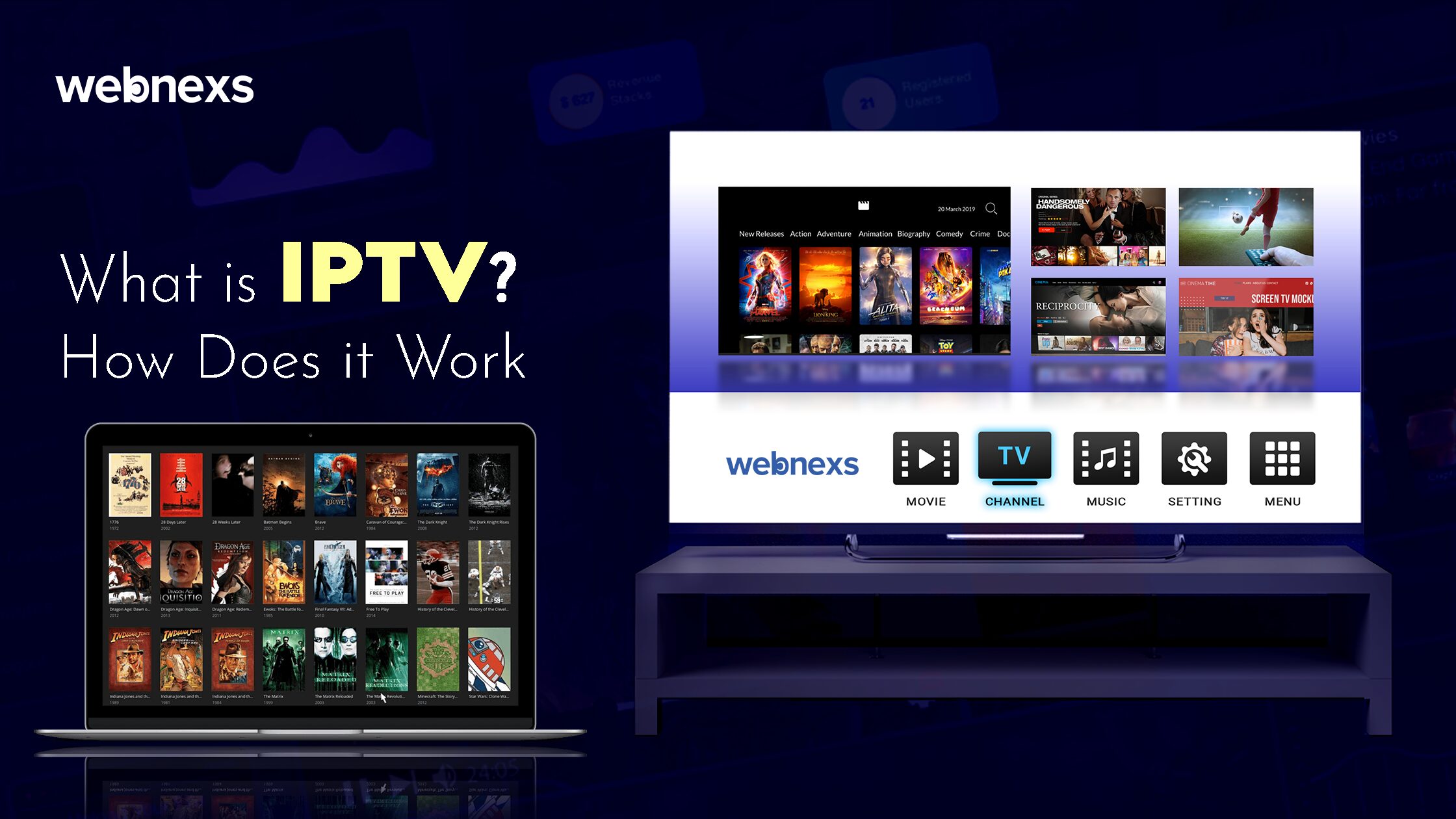The world of television has been constantly evolving since its inception. From black and white screens to color TVs, and from cable television to video streaming services, the technology has progressed by leaps and bounds. In recent years, IPTV (Internet Protocol television) has emerged as the next big thing in the world of TV. It is a technology that uses the internet protocol to deliver television content, bypassing traditional terrestrial, satellite, and cable television formats.
If you are curious about the future of television and the technology behind it, this complete guide to IPTV is for you. In this article, we will discuss the basics of IPTV, its benefits, how it works, the IPTV services available, and much more. We will also delve into the challenges faced by IPTV providers, the legal implications of using IPTV services, and the future of IPTV.
Introduction to IPTV
IPTV stands for internet protocol television and is the technology that delivers live television programs over the internet instead of traditional broadcast signals. It works by streaming content through an IP network, allowing viewers to access multiple TV channels through IPTV services.
With IPTV, viewers can also access video on demand, time shifting, and interactive TV features. Besides providing an enhanced viewing experience, IPTV has several advantages, such as cost savings, increased choice, and flexibility.
Security measures such as IP multicasting with Internet Group Management Protocol (IGMP) and Real-Time Streaming Protocol (RTSP) are also used to ensure a secure connection. Because of its many benefits, more and more providers are offering IPTV services with different packages and pricing options.
What is IPTV?
Internet Protocol Television is an internet-based technology used to deliver TV programs and videos that are live or on demand. It uses the same technology as internet-based services, such as streaming video and telephone services.
IPTV services offer internet-based access to many TV channels, with some services being free and others requiring a subscription fee. It works by broadcasting live TV programs over the internet as they’re being watched, which is known as IP simulcasting. Uses the Real-Time Streaming Protocol (RTSP) to ensure a high-quality streaming experience. These technologies combined make a powerful and efficient way to access television content.
Read More: Benefits and Classification of IPTV
How Does IPTV Work?
IPTV delivers TV content via a managed network, such as a WAN or LAN, using Internet Protocol (IP), which is also utilized for online services like streaming media and webpages.

Delivering IPTV content is straightforward and can be explained in a few steps:
- A user requests to watch a particular program and the IPTV provider receives the request.
- The IPTV provider then processes the request and transmits a video stream from their server to the end user.
- The content stream travels securely through a private network to a gateway at the user’s end.
- The content is delivered to the playback device in packets via the real-time streaming protocol (RTSP) and is then compressed to optimize for playback.
However, for the above process to work, the TV must be capable of reading signals received over the internet protocol. Some TVs may require external help to set up an IPTV service because they cannot read the received signals. If your TV is not compatible with IPTV, you will need to purchase an IPTV set-top box.
IPTV box
An IPTV box is a device that allows you to watch television programs, movies, and other content over an internet connection instead of traditional cable or satellite TV. IPTV stands for Internet Protocol Television, and it uses the internet to transmit media content to your television.
IPTV boxes usually come with their own operating system and are equipped with an HDMI port that connects to your television. We can connect the box to the internet either via Wi-Fi or Ethernet cable, and it allows you to access a wide range of channels, movies, and other content from around the world.
Hybrid IPTV
It allows users to access a wide range of content, including Linear TV, on-demand movies and TV shows with a single set of box.
Unlike traditional IPTV, which requires a high-speed internet connection to stream video content, hybrid IPTV integrates IPTV services with existing broadcast TV signals. This means that users can access both internet-based content and traditional TV channels without having to switch between different devices or platforms.
It is also increasingly popular as more people look for ways to access a wider range of content through a single device. It offers a convenient and cost-effective solution for those who want to enjoy the benefits of IPTV services without giving up traditional broadcast TV channels.
IPTV Security Measures
For security, IPTV businesses use physical security and security procedures to protect content works. This document uses the term “content security” to refer to these methods, which include authentication, encryption, and digital rights management (DRM).
Authentication ensures that only allowed users can access the content. Encryption is used to protect the data from being intercepted, while DRM is used to control how the content is used.
These measures ensure that only allowed users can access the content and that they can’t use it for unauthorized purposes.
IP Multicasting with Internet Group Management Protocol
IP Multicasting with Internet Group Management Protocol (IGMP) is an essential protocol used in IPTV networks to facilitate gaining and relinquishing membership into multi cast groups.
They use mainly it for audio (radio) and video distribution. IGMP allows several devices to share a single IP address, so they can all receive the same content.
Network hosts use this protocol to express the desire to join or leave a particular multicast group and thus allow end systems to join and leave IP-Multicast groups or channels (depending on the IGMP version).
For example, in an IPTV scenario, they use this protocol for receiving broadcast content from multiple channels simultaneously. With IGMP enabled, users can access multiple TV channels through their IPTV service providers without worrying about missing any of their favorite shows.
Real-Time Streaming Protocol
Real-Time Streaming Protocol (RTSP) is a commonly used protocol for streaming media content over the internet. IPTV uses it to provide users with access to multiple TV channels and other multimedia content. RTSP works by establishing a connection between the client and server and sending the streaming data in separate packets.
This allows for real-time two-way communication, as well as smooth transmission of audio and video data. The protocol also enables content providers to control aspects such as stream buffering, playback rate, and quality of service.
RTSP provides users with an ideal way to access multimedia content from IPTV providers, allowing them to watch live TV programs on multiple devices with no interruptions or delays.
Accessing Multiple TV Channels Through IPTV Services
IPTV services provide viewers with the ability to access multiple TV channels using their internet connection. Subscribers can choose from a variety of packages that offer different channels and services, such as pay-per-view and on-demand content. The services may be free or have a monthly subscription fee.
IPTV services provide smooth simultaneous streaming of multiple programs, allowing viewers to watch different channels with no lag or buffer time. IPTV also offers a secure connection, with encryption and authentication measures in place to ensure the privacy and security of the user’s data. This makes it an attractive option for those looking for a reliable TV streaming service.
Read More: How to start Your Own TV streaming Channel Online
Pricing and Availability
With pricing and availability, IPTV is available in a variety of packages, depending on the provider. IPTV providers offer different packages at different prices, depending on the number of channels and features included. Some providers may also offer discounts for longer subscription periods.
In addition, some providers offer free trials for customers to test out their services. In terms of availability, IPTV is available in most countries around the World. However, some countries may have restrictions on the use of IPTV services. Due to copyright laws or other regulations. Some providers may not several available in certain regions or countries due to licensing issues.
Types of IPTV
There are several types of IPTV, each with its own advantages. The most common type of IPTV is the delivery service for streamed content over a managed network such as a wide area network (WAN), a private local area network (LAN) or public internet.

Live TV
This allows users to watch live television broadcasts in real-time, similar to conventional TV. It is commonly used to broadcast live-streaming events, such as sports and conferences.
Examples of this format include FOX Sports Go, Hulu Live TV, Sling TV, and CBS Sports HQ.
Video-on-Demand (VOD)
VOD services work similarly to most OTT providers, where you pay a subscription fee and have access to a large library of videos to watch at your convenience.
This format is increasingly appealing to consumers because of its flexibility and has led many IPTV providers to introduce on-demand services to compete with popular OTT platforms such as Netflix, Hulu, and Amazon Prime Video.
Time-Shifted TV
We also know this as catch-up TV. It allows users to watch previously broadcasted TV shows at a later time. The main difference between time-shifted TV and VOD is that time-shifted TV provides access to old content for a limited time, typically. For a few days before it disappears. An example of an IPTV provider using this format is BBC’s iPlayer.
Benefits of IPTV
IPTV offers several benefits for users who are looking for a more convenient and customizable television experience. Here are some of the main advantages of IPTV:
- Access to a wider selection of channels: With IPTV, users can access a wider selection of channels, including international channels that may not be available through traditional television formats.
- Better picture quality: IPTV offers better picture quality than traditional television formats, with high-definition and even 4K options available.
- On-demand content: Many IPTV services offer on-demand content, allowing users to watch movies, TV shows, and other programs whenever they want.
- Interactive features: Some IPTV providers offer interactive features, such as live chats and social media integration, allowing viewers to engage with each other and the content they are watching.
- Customizable viewing experience: With IPTV, users can control what they watch and when they watch it. They can pause, rewind, and fast-forward through programs, and even record programs to watch later.
- Cost-effective: IPTV can be more cost-effective than traditional television formats, as users only pay for the channels they want to watch, rather than paying for a package of channels they may not be interested in.
- Easy to use: IPTV services are easy to use and can be accessed from a variety of devices, including smartphones, tablets, and smart TVs.
Overall, IPTV offers a more convenient and customizable television experience for users who are looking for more control over what they watch and how they watch it.
IPTV vs. Traditional Television
IPTV offers several advantages over traditional television formats. With IPTV, users can access a wider selection of channels, including international channels, and enjoy better picture quality. IPTV also provides more control over what you watch, allowing users to pause, rewind, and fast-forward through programs.
Traditional television formats offer a more straightforward viewing experience, with no need for high-speed internet connections or complex devices.
IPTV vs. Streaming Services
IPTV and streaming services both offer on-demand content that can be accessed from anywhere with an internet connection. However, there are some differences between the two.
IPTV offers a wider selection of live television channels and can provide better picture quality. Streaming services offer a greater selection of on-demand content, such as movies and TV shows, and are more affordable than IPTV services.
Choosing the Right IPTV Service Provider
When choosing an IPTV service provider, it is important to consider several factors. These include the quality of the service, the selection of channels, the cost of the service, and the provider’s reputation.
It is also important to ensure that the provider is legal and licensed to offer the content they provide. Users should be cautious of providers that offer illegal content, as this may cause legal consequences.
Popular IPTV Providers
IPTV is becoming increasingly popular and there are now several different providers offering services. Popular IPTV providers include:
- AT&T U-verse
- Fetch TV,
- DirecTV Now
- Sling TV
- YouTube TV
- Hulu Live TV.
Each provider offers a variety of packages with different levels of quality and features. Depending on your needs and budget, you can choose from a wide range of packages from these providers. All of them offer a variety of channels, including HD channels and digital music channels, for an enhanced viewing experience. Some providers also offer on-demand content so you can watch movies and TV. shows whenever you want. With all the options available, you can easily find an IPTV provider that meets your needs.
Challenges that IPTV providers facing
One of the main challenges that IPTV providers face is network congestion. As more and more users stream video content through IPTV services, the demand for network resources increases. This can lead to slow buffering times, interrupted streams, and other issues that can impact the quality of the viewing experience. Providers must continually invest in network infrastructure and optimize their delivery systems to ensure that their users have a seamless viewing experience.
Another challenge for IPTV providers is bandwidth limitations. Because video content requires a significant amount of bandwidth to stream, providers must ensure that they have adequate bandwidth to deliver their services to users. This can be especially challenging in areas where internet connectivity is limited or unreliable.
Besides these challenges, there are also several limitations to IPTV that providers must navigate. One of the most significant limitations is video quality. While IPTV can deliver high-quality video, the quality of the stream depends on a variety of factors, including the user’s internet connection, the quality of the content itself, and the encoding used by the provider. Providers must work to optimize their video streams to ensure that they are delivering the best possible quality to their users.
Read more: What is Bitrate, Audio Quality, Audio Codecs, Sample Rate & Bandwidth?
Challenges and Future of IPTV
The challenges of IPTV include high upfront costs, the need for updated hardware and software, and security vulnerabilities. As the technology is relatively new, it also requires a certain level of technical know-how to install and maintain.
There are concerns about the quality of service that is provided, as well as access to content that is restricted in certain countries.
As the popularity of IPTV services continues to rise, the statistics below show the market’s rapid growth:
- The demand for IPTV Canada services is increasing globally at an annual rate of 30%–35%.
- There are currently over a billion subscribers to IPTV services worldwide, reflecting the widespread demand for this technology.
- European countries such as France, Germany, and the U.K. currently hold the largest market share for IPTV services, showing the technology’s popularity in these regions.
- India is currently the fastest-growing IPTV market, and in a few years, it is likely to surpass its European counterparts in terms of market size.
We expect that access to content will become less restricted as providers continue to develop solutions for managing rights holders’ content. In the future, IPTV could be a major player in the video streaming market with its ability to provide users with high-quality streaming services at an affordable price.
Should Your Broadcasting Business Consider IPTV for Content Delivery?
The decision to use IPTV as a content delivery method is entirely subjective and depends on your business goals. When deciding whether IPTV is right for your business, it’s important to consider whether you prioritize reach or content quality.
If you prioritize high-quality content delivery over a wider audience reach, then starting an IPTV service could be the right choice for you. Although IPTV may come at a higher cost, it allows for a more personalized and high-quality viewing experience for your audience.
If you value a broad reach and ease of accessibility, then OTT is likely the better option. OTT services offer a wider audience reach, making them an attractive choice for businesses seeking to go global.
If you choose to pursue the OTT route, Webnexs can help you develop an OTT app or streaming service. It also provides white-label OTT apps, broadcasters, and publishers can launch an ad-supported app on Android, iOS, Android TV, Apple TV, or Samsung and LG smart TVs easily.
Webnexs online video platform was designed specifically to help publishers and video providers maximize the website, OTT, and CTV ad revenue. If launching an ad-supported OTT service aligns with your business goals, get in touch with us. We can help turn your vision into reality.
Conclusion
In conclusion, IPTV is a revolutionary technology that has changed the way we watch television. It offers users access to multiple TV channels in high definition, with the ability to access content from anywhere in the world. The technology provides users with the ability to customize their viewing experience through features such as time-shifting and video-on-demand services.
IPTV services are becoming increasingly secure, with providers incorporating the latest encryption technologies to protect user data. With its multitude of features and benefits, IPTV is becoming the go-to choice for television viewers around the world.
Frequently Asked Question(FAQ)
1. What is IPTV?
IPTV stands for Internet Protocol Television, which is a digital streaming service that uses the internet to deliver television content to subscribers. It allows viewers to watch their favorite TV shows, movies, and sports events on their smart TVs, computers, smartphones, and tablets.
2. How does IPTV work?
IPTV works by transmitting TV signals over the internet protocol (IP) network instead of using traditional terrestrial, satellite, or cable television formats. The IPTV service provider converts the video signals into digital format and delivers them over the internet to the subscribers through a set-top box, smart TV, or mobile device.
3. What are the benefits of IPTV?
IPTV provides several benefits to viewers, including access to a wide range of channels, on-demand content, high-quality video and audio, and interactive features like pause, rewind, and fast-forward. It also offers greater flexibility and convenience since viewers can watch their favorite shows on any device, anywhere, and anytime.
4. What equipment do I need to use IPTV?
To use IPTV, you need a device that can connect to the internet, such as a smart TV, computer, or smartphone, and a stable internet connection with a speed of at least 10 Mbps. You may also need a set-top box or media player to decode and display the IPTV content on your TV.



16 Responses
Overall, I just wanted to say thanks again for creating such an informative and user-friendly article on IPTV. You’ve done a great job of explaining the technology and its potential uses, as well as providing helpful tips and resources for anyone looking to explore this exciting new medium. Keep up the great work!
The blog is very helpful on the different types of IPTV services. I had no idea that there were different categories of IPTV, such as live IPTV and time-shifted IPTV. It was interesting to learn about the different features and benefits of each type, such as the ability to pause, rewind, and record live TV with time-shifted IPTV.
I also appreciated the way you addressed some of the potential concerns and drawbacks of IPTV, such as the need for a stable internet connection and the potential for buffering issues. It’s always good to have a balanced view of a new technology, and your article did a great job of highlighting both the pros and cons of IPTV.
I also found the section on how to set up an IPTV service to be very informative. The step-by-step instructions and screenshots made it easy to follow along and understand the process. It’s great to know that setting up an IPTV service is relatively straightforward, and that there are plenty of resources available to help guide you through the process.
I just wanted to say thank you for taking the time to create such an informative and engaging blog post on IPTV. You’ve definitely piqued my interest in this exciting technology and I look forward to learning more about it in the future!
I just wanted to say that your article was a great resource for anyone looking to learn more about IPTV. You explained the technology in a clear and concise way, and provided helpful examples and illustrations to make it easier to understand. Thanks again for sharing your knowledge and insights on this fascinating topic!
I just finished reading your blog post on IPTV and I must say, I learned a lot! As someone who has heard the term “IPTV” thrown around but never really understood what it meant, your article was incredibly informative and easy to understand.
Helpful about your article was the section on the different devices and platforms that are compatible with IPTV. As someone who likes to stream content on multiple devices, it was great to learn that IPTV can be accessed on a variety of devices, including smartphones, tablets, smart TVs, and even gaming consoles. I also appreciated the list of popular IPTV apps that you included, which gave me some ideas for services to check out
It’s amazing to think about the possibilities that IPTV opens up for content creators and consumers alike, such as the ability to create customized channels and interactive content. The fact that IPTV can also be used for education and training purposes is also very exciting.
I appreciated the way you broke down the technical jargon and explained how IPTV works in layman’s terms. It was interesting to learn about the different components that make up an IPTV system, such as the content delivery network and the middleware. I also found it helpful that you included real-life examples of IPTV services like Netflix and Hulu, which made it easier for me to grasp the concept.
One thing that really stood out to me was the potential for IPTV to revolutionize the way we consume media. The fact that it allows for on-demand access to a wide range of content from anywhere in the world is truly remarkable. As someone who enjoys binge-watching TV shows, I can definitely see the appeal of being able to watch my favorite programs at my own convenience.
the article is a helpful introduction to IPTV for those who may be unfamiliar with the technology. It provides a clear explanation of what IPTV is, how it works, and the different types of IPTV services available.
The drawback of IPTV is that it can be affected by internet speeds and connectivity issues. If the internet connection is slow or unreliable, the quality of the IPTV stream may be affected. Additionally, IPTV may not be available in all regions or may be subject to geographical restrictions.
The article does a good job of explaining what IPTV is and how it works. IPTV stands for “Internet Protocol Television” and refers to a way of delivering television content over the internet. Unlike traditional broadcasting methods that use radio waves, IPTV uses the internet to deliver television content to viewers.
One of the key advantages of IPTV is its ability to offer a wider range of channels and content than traditional TV. Because IPTV is delivered over the internet, it can offer access to international channels and a variety of on-demand content. Additionally, IPTV can be accessed on a range of devices, including smartphones, tablets, and smart TVs, which makes it more convenient than traditional TV.
The article explains the different types of IPTV services available. These include “live IPTV,” which delivers live TV channels in real-time, and “video-on-demand IPTV,” which allows viewers to access the content at their convenience. The article also mentions “time-shifted IPTV,” which allows viewers to pause, rewind, and fast-forward through live TV content.